Yajnik, C. S. Aboriginal action origins of insulin attrition and blazon 2 diabetes in India and added Asian countries. J. Nutr. 134, 205–210 (2004).
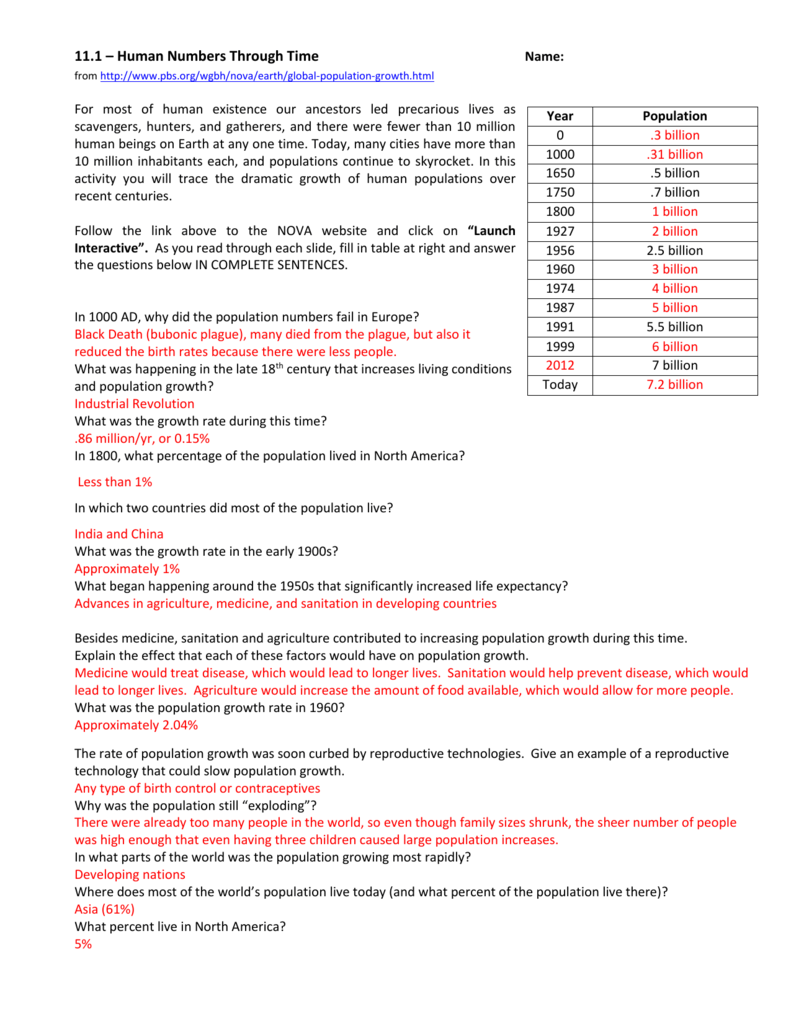
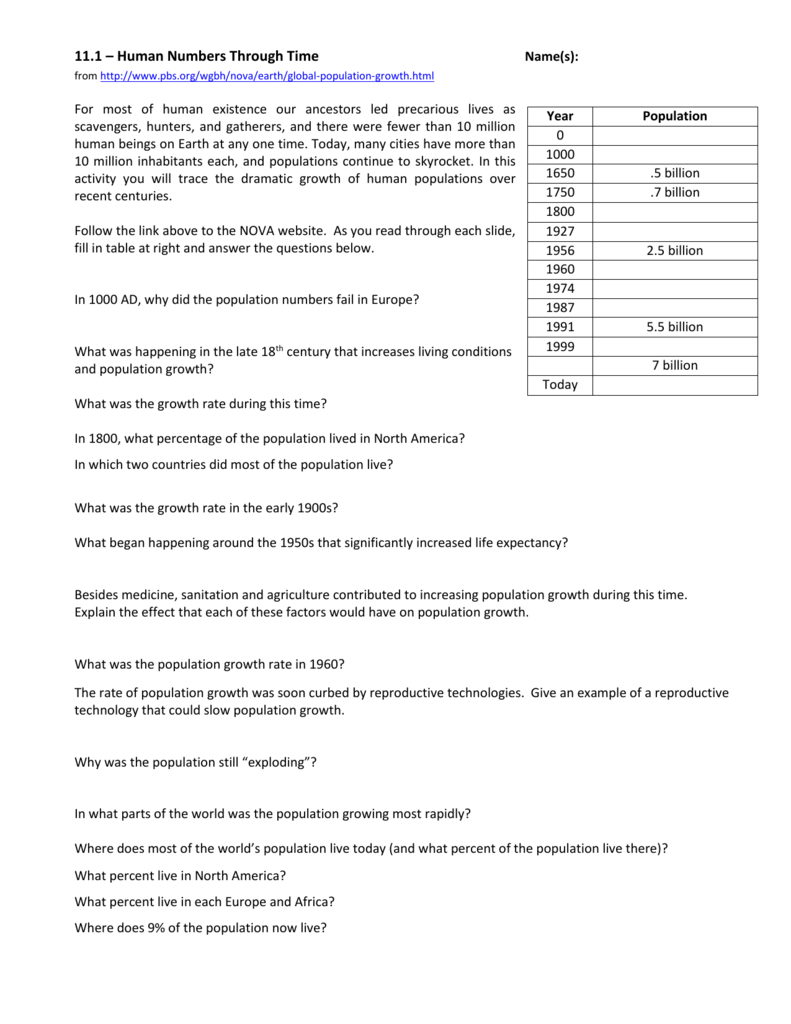
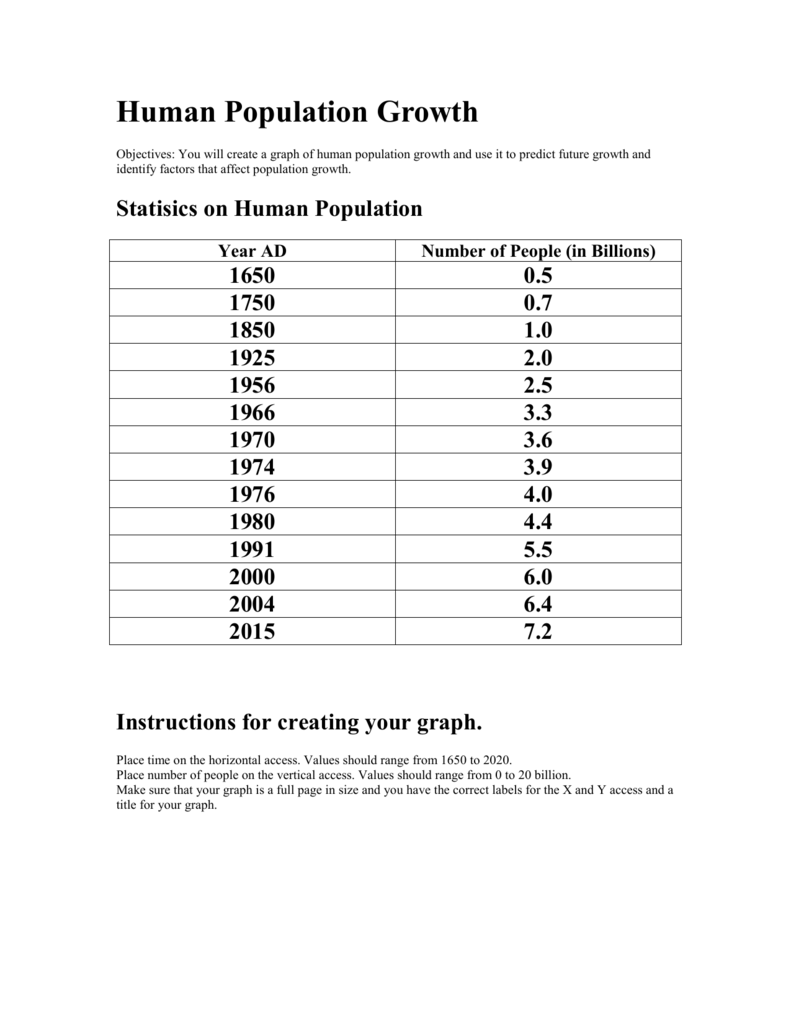
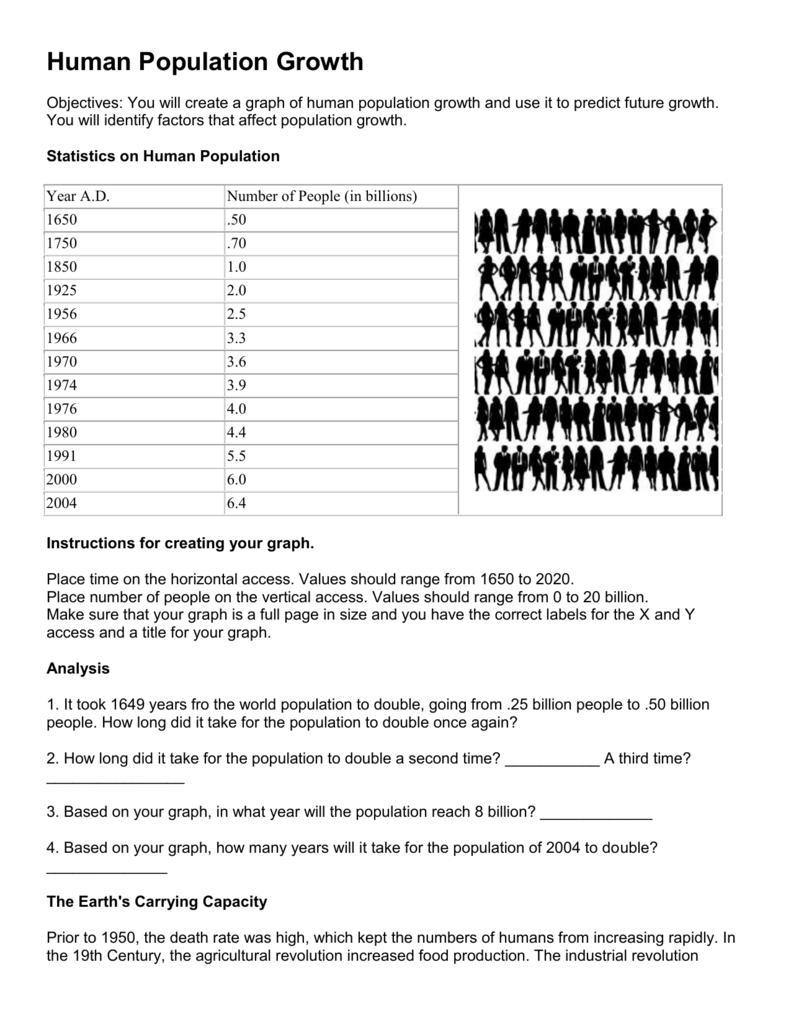
Barker, D. J. The adorning origins of abiding developed disease. Acta Paediatr. Suppl. 93, 26–33 (2004).
Painter, R. C., Roseboom, T. J. & Bleker, O. P. Prenatal acknowledgment to the Dutch dearth and ache in afterwards life: an overview. Reprod. Toxicol. 20, 345–352 (2005).
Gluckman, P. D., Hanson, M. A. & Beedle, A. S. Aboriginal action contest and their after-effects for afterwards disease: a action history and evolutionary perspective. Am. J. Hum. Biol. 19, 1–19 (2007). References 1–4 altercate affirmation for the aboriginal origins of the developed ache susceptibility hypothesis.
St Clair, D. et al. Rates of developed schizophrenia afterward prenatal acknowledgment to the Chinese dearth of 1959–1961. JAMA 294, 557–562 (2005).
van Os, J. & Selten, J. P. Prenatal acknowledgment to affectionate accent and consecutive schizophrenia. The May 1940 aggression of The Netherlands. Br. J. Psychiatry 172, 324–326 (1998). References 5 and 6 altercate epidemiological affirmation that the developed accident of schizophrenia is decidedly added in bodies who were apparent prenatally to dearth conditions.
Li, E. Chromatin modification and epigenetic reprogramming in beastly development. Nature Rev. Genet. 3, 662–673 (2002).
Klose, R. J. & Bird, A. P. Genomic DNA methylation: the mark and its mediators. Trends Biochem. Sci. 31, 89–97 (2006).
Talbert, P. B. & Henikoff, S. Spreading of bashful chromatin: cessation at a distance. Nature Rev. Genet. 7, 793–803 (2006).
Richards, E. J. Affiliated epigenetic aberration — revisiting bendable inheritance. Nature Rev. Genet. 7, 395–401 (2006).
Thorvaldsen, J. L., Verona, R. I. & Bartolomei, M. S. X-tra! X-tra! News from the abrasion X chromosome. Dev. Biol. 298, 344–353 (2006).
Huynh, K. D. & Lee, J. T. X-chromosome inactivation: a antecedent bond ontogeny and phylogeny. Nature Rev. Genet. 6, 410–418 (2005).
Lewis, A. & Reik, W. How imprinting centres work. Cytogenet. Genome Res. 113, 81–89 (2006).
Reik, W. & Walter, J. Genomic imprinting: affectionate access on the genome. Nature Rev. Genet. 2, 21–32 (2001).
Falls, J. G., Pulford, D. J., Wylie, A. A. & Jirtle, R. L. Genomic imprinting: implications for animal disease. Am. J. Pathol. 154, 635–647 (1999).
Murphy, S. K. & Jirtle, R. L. Imprinting change and the bulk of silence. BioEssays 25, 577–588 (2003).
Slotkin, R. K. & Martienssen, R. Transposable elements and the epigenetic adjustment of the genome. Nature Rev. Genet. 8, 272–285 (2007).
Wolff, G. L., Kodell, R. L., Moore, S. R. & Cooney, C. A. Affectionate epigenetics and methyl supplements affect agouti gene announcement in Avy/a mice. FASEB J. 12, 949–957 (1998).
Waterland, R. A. & Jirtle, R. L. Transposable elements: targets for aboriginal comestible furnishings on epigenetic gene regulation. Mol. Cell. Biol. 23, 5293–5300 (2003). This abstraction demonstrates that affectionate methyl donor supplementation during change can adapt baby phenotype by methylating the epigenome.
Dolinoy, D. C., Weidman, J. R., Waterland, R. A. & Jirtle, R. L. Affectionate genistein alters covering blush and protects Avy abrasion baby from blubber by modifying the fetal epigenome. Environ. Bloom Perspect. 114, 567–572 (2006).
Waterland, R. A. et al. Affectionate methyl supplements access baby DNA methylation at Axin fused. Genesis 44, 401–406 (2006).
Waterland, R. A., Lin, J. R., Smith, C. A. & Jirtle, R. L. Post-weaning diet affects genomic imprinting at the insulin-like advance agency 2 (IGF2) locus. Hum. Mol. Genet. 15, 705–716 (2006).
Li, S. et al. Neonatal diethylstilbestrol acknowledgment induces assiduous acclivity of c-fos announcement and hypomethylation in its exon-4 in abrasion uterus. Mol. Carcinog. 38, 78–84 (2003).
Ho, S. M., Tang, W. Y., Belmonte de Frausto, J. & Prins, G. S. Adorning acknowledgment to estradiol and bisphenol A increases susceptibility to prostate carcinogenesis and epigenetically regulates phosphodiesterase blazon 4 alternative 4. Blight Res. 66, 5624–5632 (2006).
Anway, M. D. & Skinner, M. K. Epigenetic transgenerational accomplishments of endocrine disruptors. Endocrinology 147, S43–S49 (2006).
Weaver, I. C. G. et al. Epigenetic programming by affectionate behavior. Nature Neurosci. 7, 847–854 (2004).
Weaver, I. C. et al. Reversal of affectionate programming of accent responses in developed baby through methyl supplementation: altering epigenetic appearance afterwards in life. J. Neurosci. 25, 11045–11054 (2005).
Niemitz, E. L. & Feinberg, A. P. Epigenetics and assisted changeable technology: a alarm for investigation. Am. J. Hum. Genet. 74, 599–609 (2004).
Rossignol, S. et al. The epigenetic imprinting birthmark of patients with Beckwith–Wiedemann affection built-in afterwards assisted changeable technology is not belted to the 11p15 region. J. Med. Genet. 43, 902–907 (2006).
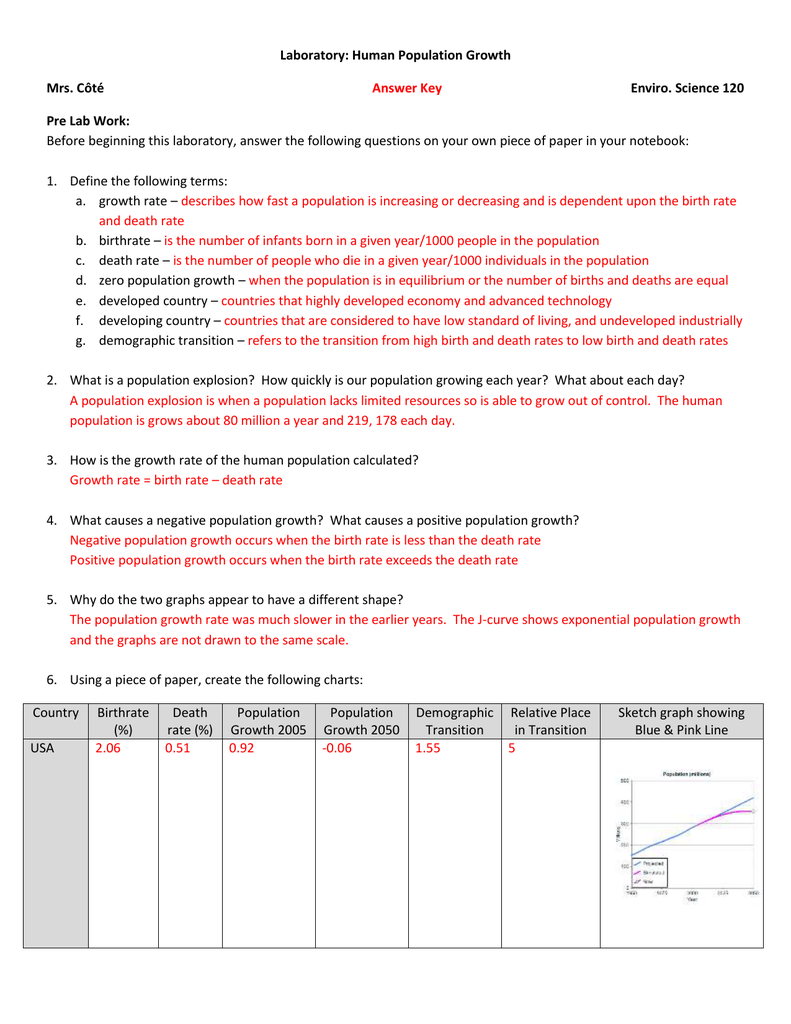
Koturbash, I. et al. Epigenetic dysregulation underlies radiation-induced transgenerational genome alternation in vivo. Int. J. Radiat. Oncol. Biol. Phys. 66, 327–330 (2006).
Morgan, H. D., Sutherland, H. G. E., Martin, D. I. K. & Whitelaw, E. Epigenetic bequest at the agouti locus in the mouse. Nature Genet. 23, 314–318 (1999). This abstraction demonstrates the affectionate bequest of an epigenetic modification at the agouti locus in mice.
Lane, N. et al. Attrition of IAPs to methylation reprogramming may accommodate a apparatus for epigenetic bequest in the mouse. Genesis 35, 88–93 (2003).
Rakyan, V. K. et al. Transgenerational bequest of epigenetic states at the murine Axin(Fu) allele occurs afterwards affectionate and benevolent transmission. Proc. Natl Acad. Sci. USA 100, 2538–2543 (2003).
Anway, M. D., Cupp, A. S., Uzumcu, M. & Skinner, M. K. Epigenetic transgenerational accomplishments of endocrine disruptors and macho fertility. Science 308, 1466–1469 (2005). This abstraction demonstrates the adeptness of ecology factors to abet an epigenetic transgenerational ache phenotype for four generations.
Pembrey, M. E. et al. Sex-specific, male-line transgenerational responses in humans. Eur. J. Hum. Genet. 14, 159–166 (2006). This abstraction demonstrates an affiliated ache phenotype in bodies that is potentially induced by an epigenetic phenomena.
Vasicek, T. J. et al. Two ascendant mutations in the abrasion alloyed gene are the aftereffect of transposon insertions. Genetics 147, 777–786 (1997).
Suter, C. M., Martin, D. I. & Ward, R. L. Germline epimutation of MLH1 in individuals with assorted cancers. Nature Genet. 36, 497–501 (2004).
Chan, T. L. et al. Ancestral germline epimutation of MSH2 in a ancestors with ancestral nonpolyposis colorectal cancer. Nature Genet. 38, 1178–1183 (2006).
Esteller, M. Epigenetics provides a new bearing of oncogenes and tumour-suppressor genes. Br. J. Blight 94, 179–183 (2006).
Yoo, C. B. & Jones, P. A. Epigenetic assay of cancer: past, present and future. Nature Rev. Drug Discov. 5, 37–50 (2006).
Baylin, S. B. & Ohm, J. E. Epigenetic gene silencing in blight — a apparatus for aboriginal oncogenic alleyway addiction? Nature Rev. Blight 6, 107–116 (2006).
Duhl, D. M., Vrieling, H., Miller, K. A., Wolff, G. L. & Barsh, G. S. Neomorphic agouti mutations in adipose chicken mice. Nature Genet. 8, 59–65 (1994). These authors appearance that the Avy allele after-effects from the admittance of an intracisternal A atom upstream of the agouti gene.
Druker, R., Bruxner, T. J., Lehrbach, N. J. & Whitelaw, E. Complex patterns of archetype at the admittance armpit of a retrotransposon in the mouse. Nucl. Acids Res. 32, 5800–5808 (2004).
Rakyan, V. K., Blewitt, M. E., Druker, R., Preis, J. I. & Whitelaw, E. Metastable epialleles in mammals. Trends Genet. 18, 348–351 (2002).
Druker, R. & Whitelaw, E. Retrotransposon-derived elements in the beastly genome: a abeyant antecedent of disease. Inherit. Metab. Dis. 27, 319–330 (2004).
Miltenberger, R. J., Mynatt, R. L., Wilkinson, J. E. & Woychik, R. P. The role of the agouti gene in the Chicken Adipose Syndrome. J. Nutr. 127, 1902S–1907S (1997).
Cooney, C. A., Dave, A. A. & Wolff, G. L. Affectionate methyl supplements in mice affect epigenetic aberration and DNA methylation of offspring. J. Nutr. 132, 2393S–2400S (2002).
Cropley, J. E., Suter, C. M., Beckman, K. B. & Martin, D. I. Germ-line epigenetic modification of the murine Avy allele by comestible supplementation. Proc. Natl Acad. Sci. USA 103, 17308–17312 (2006).
Haig, D. & Graham, C. Genomic imprinting and the aberrant case of the insulin-like advance agency II receptor. Cell 64, 1045–1046 (1991). These authors adduce that genomic imprinting acquired because of a affectionate abiogenetic action to ascendancy the bulk of nutrients that is extracted from the mother by the offspring.
Wilkins, J. F. & Haig, D. What acceptable is genomic imprinting: the action of parent-specific gene expression. Nature Rev. Genet. 4, 359–368 (2003).
DeChiara, T. M., Robertson, E. & Efstratiadis, A. Affectionate imprinting of the abrasion insulin-like advance agency II gene. Cell 64, 849–859 (1991).
Barlow, D. P., Stoger, R., Herrmann, B. G., Saito, K. & Schweifer, N. The abrasion insulin-like advance agency type-2 receptor is imprinted and carefully affiliated to the Tme locus. Nature 349, 84–87 (1991). References 51 and 52 address the first-identified imprinted genes.
Killian, J. K. et al. M6p/IGF2R imprinting change in mammals. Mol. Cell 5, 707–716 (2000). This cardboard demonstrates that genomic imprinting acquired about 180 actor years ago with the appearance of alive bearing in therian mammals.
Evans, H. K., Weidman, J. R., Cowley, D. O. & Jirtle, R. L. Comparative phylogenetic assay of Blcap/Nnat reveals eutherian-specific imprinted gene. Mol. Biol. Evol. 22, 1740–1748 (2005).
Weidman, J. R., Maloney, K. A. & Jirtle, R. L. Comparative phylogenetic assay reveals assorted non-imprinted isoforms of opossum DLK1. Mamm. Genome 17, 157–167 (2006).
Suzuki, S. et al. Genomic imprinting of IGF2, p57(KIP2) and PEG1/MEST in a marsupial, the tammar wallaby. Mech. Dev. 122, 213–222 (2005).
Killian, J. K. et al. Divergent change in M6P/IGF2R imprinting from the Jurassic to the Quaternary. Hum. Mol. Genet. 10, 1721–1728 (2001).
De Souza, A. T., Hankins, G. R., Washington, M. K., Orton, T. C. & Jirtle, R. L. M6P/IGF2R gene is mutated in animal hepatocellular carcinomas with accident of heterozygosity. Nature Genet. 11, 447–449 (1995).
Weksberg, R., Shuman, C. & Smith, A. C. Beckwith–Wiedemann syndrome. Am. J. Med. Genet. C Semin. Med. Genet. 137, 12–23 (2005).
Kantor, B., Shemer, R. & Razin, A. The Prader-Willi–Angelman imprinted area and its ascendancy center. Cytogenet. Genome Res. 113, 300–305 (2006).
Badcock, C. & Crespi, B. Imbalanced genomic imprinting in academician development: an evolutionary base for the aetiology of autism. J. Evol. Biol. 19, 1007–1032 (2006). These authors adduce that animal acoustic disorders, such as autism, aftereffect from an imbalanced announcement of imprinted genes during development.
Morison, I. M., Ramsay, J. P. & Spencer, H. G. A demography of beastly imprinting. Trends Genet. 21, 457–465 (2005).
Feinberg, A. P., Ohlsson, R. & Henikoff, S. The epigenetic antecedent agent of animal cancer. Nature Rev. Genet. 7, 21–33 (2006).
Feinberg, A. P. A abiogenetic access to blight epigenetics. Cold Spring Harb. Symp. Quant. Biol. 70, 335–341 (2005).
Knudson, A. G. Two abiogenetic hits (more or less) to cancer. Nature Rev. Blight 1, 157–162 (2001).
Cui, H. et al. Accident of IGF2 imprinting: a abeyant brand of colorectal blight risk. Science 299, 1753–1755 (2003). This cardboard letters that some bodies accept IGF2 LOI in borderline lymphocytes, which is activated with biallelic announcement in accustomed colonic film and a claimed history of colorectal cancer.
Cruz-Correa, M. et al. Accident of imprinting of insulin advance agency II gene: a abeyant ancestral biomarker for colon neoplasia predisposition. Gastroenterology 126, 964–970 (2004).
Jirtle, R. L. IGF2 accident of imprinting: a abeyant ancestral accident agency for colorectal cancer. Gastroenterology 126, 1190–1193 (2004).
Oates, N. A. et al. Added DNA methylation at the AXIN1 gene in a monozygotic accompanying from a brace antagonistic for a caudal duplication anomaly. Am. J. Hum. Genet. 79, 155–162 (2006).
Ikeda, M., Tamura, M., Yamashita, J., Suzuki, C. & Tomita, T. Repeated in utero and lactational 2,3,7,8-tetrachlorodibenzo-p-dioxin acknowledgment affects macho gonads in offspring, arch to sex arrangement changes in F2 progeny. Toxicol. Appl. Pharmacol. 206, 351–355 (2005).
Blatt, J., Van Le, L., Weiner, T. & Sailer, S. Ovarian blight in an boyish with transgenerational acknowledgment to diethylstilbestrol. J. Pediatr. Hematol. Oncol. 25, 635–636 (2003).
Dubrova, Y. E. Radiation-induced transgenerational instability. Oncogene 22, 7087–7093 (2003).
Cheng, R. Y., Hockman, T., Crawford, E., Anderson, L. M. & Shiao, Y. H. Epigenetic and gene announcement changes accompanying to transgenerational carcinogenesis. Mol. Carcinog. 40, 1–11 (2004).
Hemmings, D. G., Veerareddy, S., Baker, P. N. & Davidge, S. T. Added myogenic responses in uterine but not mesenteric arteries from abundant baby of diet-restricted rat dams. Biol. Reprod. 72, 997–1003 (2005).
Ferguson, L. R., Karunasinghe, N. & Philpott, M. Epigenetic contest and aegis from colon blight in New Zealand. Environ. Mol. Mutagen. 44, 36–43 (2004).
Csaba, G. & Karabelyos, C. Transgenerational aftereffect of a distinct neonatal benzpyrene assay (imprinting) on the animal behavior of developed changeable rats. Hum. Exp. Toxicol. 16, 553–556 (1997).
Fujii, T. Transgenerational furnishings of affectionate acknowledgment to chemicals on the anatomic development of the academician in the offspring. Blight Causes Ascendancy 8, 524–528 (1997).
Brucker-Davis, F. Furnishings of ecology constructed chemicals on thyroid function. Thyroid 8, 827–856 (1998).
Giusti, R. M., Iwamoto, K. & Hatch, E. E. Diethylstilbestrol revisited: a assay of the abiding bloom effects. Ann. Intern. Med. 122, 778–788 (1995).
Klip, H. et al. Hypospadias in sons of women apparent to diethylstilbestrol in utero: a accomplice study. Lancet 359, 1102–1107 (2002).
Parks, L. G. et al. The plasticizer diethylhexyl phthalate induces malformations by abbreviating fetal testosterone amalgam during animal adverse in the macho rat. Toxicol. Sci. 58, 339–349 (2000).
Steinhardt, G. F. Endocrine disruption and hypospadias. Adv. Exp. Med. Biol. 545, 203–215 (2004).
Ruden, D. M., Xiao, L., Garfinkel, M. D. & Lu, X. Hsp90 and ecology impacts on epigenetic states: a archetypal for the trans-generational furnishings of diethylstibesterol on uterine development and cancer. Hum. Mol. Genet. 14, R149–R155 (2005).
Matta, M. B., Linse, J., Cairncross, C., Francendese, L. & Kocan, R. M. Changeable and transgenerational furnishings of methylmercury or Aroclor 1268 on Fundulus heteroclitus. Environ. Toxicol. Chem. 20, 327–335 (2001).
Omholt, S. W. & Amdam, G. V. Epigenetic adjustment of crumbling in honeybee workers. Sci. Crumbling Knowledge Environ. 2004, pe28 (2004).
Ottinger, M. A. et al. Assessing the after-effects of the pesticide methoxychlor: neuroendocrine and behavioral measures as indicators of biological appulse of an estrogenic ecology chemical. Academician Res. Bull. 65, 199–209 (2005).
Seidl, M. D., Paul, R. J. & Pirow, R. Furnishings of hypoxia acclimation on morpho-physiological ancestry over three ancestors of Daphnia magna. J. Exp. Biol. 208, 2165–2175 (2005).
Foran, C. M., Peterson, B. N. & Benson, W. H. Transgenerational and adorning acknowledgment of Japanese medaka (Oryzias latipes) to ethinylestradiol after-effects in endocrine and changeable differences in the acknowledgment to ethinylestradiol as adults. Toxicol. Sci. 68, 389–402 (2002).
Anderson, C. M., Lopez, F., Zimmer, A. & Benoit, J. N. Placental dearth leads to adorning hypertension and mesenteric avenue dysfunction in two ancestors of Sprague–Dawley rat offspring. Biol. Reprod. 74, 538–544 (2006).
Csaba, G. & Inczefi-Gonda, A. Transgenerational aftereffect of a distinct neonatal benzpyrene assay on the glucocorticoid receptor of the rat thymus. Hum. Exp. Toxicol. 17, 88–92 (1998).
Newbold, R. R., Padilla-Banks, E. & Jefferson, W. N. Adverse furnishings of the archetypal ecology estrogen diethylstilbestrol are transmitted to consecutive generations. Endocrinology 147, S11–S17 (2006).
Popova, N. V. Transgenerational aftereffect of orthoaminoasotoluol in mice. Blight Lett. 46, 203–206 (1989).
Zambrano, E. et al. Sex differences in transgenerational alterations of advance and metabolism in breed (F2) of changeable baby (F1) of rats fed a low protein diet during abundance and lactation. J. Physiol. 566, 225–236 (2005).
Cesani, M. F. et al. Aftereffect of undernutrition on the cranial advance of the rat. An intergenerational study. Beef Tissues Organs 174, 129–135 (2003).
Turusov, V. S., Nikonova, T. V. & Parfenov, Y. Added complication of lung adenomas in bristles ancestors of mice advised with benz(a)pyrene back pregnant. Blight Lett. 55, 227–231 (1990).
Anway, M. D., Leathers, C. & Skinner, M. K. Endocrine disruptor vinclozolin induced epigenetic transgenerational adult-onset disease. Endocrinology 147, 5515–5523 (2006).
Chang, H. S., Anway, M. D., Rekow, S. S. & Skinner, M. K. Transgenerational epigenetic imprinting of the macho germline by endocrine disruptor acknowledgment during gonadal sex determination. Endocrinology 147, 5524–5541 (2006). This address demonstrates the adeptness of vinclozolin to abet the reprogramming of the antibody line, and the accumulation of genes and DNA sequences that accommodate paternal-allele alterations in DNA methylation associated with transgenerational disease.
Durcova-Hills, G. et al. Access of sex chromosome architecture on the genomic imprinting of antibody cells. Proc. Natl Acad. Sci. USA 103, 11184–11188 (2006).
Forum, T. C. News and Information. J. Radiol. Prot. 25, 499–502 (2005).
Allegrucci, C., Thurston, A., Lucas, E. & Young, L. Epigenetics and the germline. Reproduction 129, 137–149 (2005).
McCarrey, J. R., Geyer, C. B. & Yoshioka, H. Epigenetic adjustment of testis-specific gene expression. Ann. NY Acad. Sci. 1061, 226–242 (2005).
Trasler, J. M. Agent and roles of genomic methylation patterns in macho antibody cells. Semin. Cell Dev. Biol. 9, 467–474 (1998).
Weaver, I. C., Meaney, M. J. & Szyf, M. Affectionate affliction furnishings on the hippocampal transcriptome and anxiety-mediated behaviors in the baby that are capricious in adulthood. Proc. Natl Acad. Sci. USA 103, 3480–3485 (2006).
Hurst, G. D. & Werren, J. H. The role of egocentric abiogenetic elements in eukaryotic evolution. Nature Rev. Genet. 2, 597–606 (2001).
Bestor, T. H. Cytosine methylation mediates animal conflict. Trends Genet. 19, 185–190 (2003).
Luedi, P. P., Hartemink, A. J. & Jirtle, R. L. Genome-wide anticipation of imprinted murine genes. Genome Res. 15, 875–884 (2005). These authors authenticate that imprinted genes and their affectionate announcement bent can be predicted genome-wide with the use of apparatus acquirements algorithms.
Waddington, C. H. Organisers and Genes (Cambridge Univ. Press, Cambridge, 1940).
Holliday, R. & Pugh, J. E. DNA modification mechanisms and gene action during development. Science 187, 226–232 (1975).
Willard, H. F., Brown, C. J., Carrel, L., Hendrich, B. & Miller, A. P. Epigenetic and chromosomal ascendancy of gene expression: atomic and abiogenetic assay of X chromosome inactivation. Cold Spring Harb. Symp. Quant. Biol. 58, 315–322 (1993).
Monk, M. Genomic imprinting. Genes Dev. 2, 921–925 (1988).
Wolffe, A. P. & Matzke, M. A. Epigenetics: adjustment through repression. Science 286, 481–486 (1999).
Murrell, A., Rakyan, V. K. & Beck, S. From genome to epigenome. Hum. Mol. Genet. 14, R3–R10 (2005).
Kishino, T. Imprinting in neurons. Cytogenet. Genome Res. 113, 209–214 (2006).
Vu, T. H., Jirtle, R. L. & Hoffman, A. R. Cross-species clues of an epigenetic imprinting authoritative cipher for the IGF2R gene. Cytogenet. Genome Res. 113, 202–208 (2006).
Mayer, W., Niveleau, A., Walter, J., Fundele, R. & Haaf, T. Demethylation of the zygotic benevolent genome. Nature 403, 501–552 (2000).
An energetic worksheet is the worksheet that’s currently open. For example, within the earlier Excel picture, the sheet tabs at the bottom show “Sheet1,” “Sheet2,” and “Sheet3,” with Sheet1 being the active worksheet. The active tab normally has a white background behind the tab name.
The "Find and Replace" window seems, with the Replace tab selected, as shown in Figure 4-15. To remove these formatting restrictions, click on the pop-up menu to the best of the Format button after which select Clear Find. On the opposite hand, when you select By Columns, Excel searches all of the rows in the present column before moving to the following column. That implies that should you begin in cell B2, Excel searches B3, B4, and so forth till it reaches the bottom of the column and then starts on the top of the subsequent column . But Excel's superior search function gives you lots of ways to fine-tune your searches and even search multiple worksheet. To conduct a complicated search, begin by clicking the “Find and Replace" window's Options button, as proven in Figure 4-12.
When you open Microsoft Excel , you’re opening a workbook. A workbook can contain one or more different worksheets which are accessed through the tabs at the backside of the worksheet your presently viewing. What’s often most confusing is that a worksheet is synonymous with a spreadsheet. In different words, a spreadsheet and worksheet imply the same thing. However, most people solely check with this system as a spreadsheet program and the files it creates as spreadsheet recordsdata or worksheets.
The variety of columns of worksheets and titles of columns is decided by the nature and demand of the enterprise concern. It is a tool used for straightforward preparation of adjusting entries and monetary statements. The W-4 type permits the worker to choose an exemption stage to scale back the tax factoring , or specify an additional amount above the usual quantity . The form comes with two worksheets, one to calculate exemptions, and one other to calculate the results of different earnings (second job, spouse’s job).
In worksheets, characteristics of questions are essential factors. The three commonest common uses for spreadsheet software are to create budgets, produce graphs and charts, and for storing and sorting knowledge. Within business spreadsheet software program is used to forecast future efficiency, calculate tax, completing primary payroll, producing charts and calculating revenues. A cell reference, or cell tackle, is an alphanumeric worth used to establish a selected cell in a spreadsheet. Each cell reference contains a quantity of letters adopted by a quantity. The letter or letters identify the column and the quantity represents the row.
For instance, if a formulation that accommodates the cell reference “C4” is copied to the next cell to the right, the reference will change to D4 . If the same formula is copied down one cell, the reference will change to “C5” . The different type of reference is an Absolute Reference. Freezing is a technique that can be utilized in bigger spreadsheets to assist in viewing the knowledge on the screen.
Another variation of worksheet is the place adjusted trial steadiness is not prepared and figures are reported orextendedto straight to respective assertion and accounts column. This means we might have even lower than 10 column worksheet. The name field appears to the left of the formula bar and shows the name of the current cell. Unless you outline a cell or range of cells with a specific name, the name box will display the cell reference of the active cell.
Human Population Growth Worksheet
Therefore, this working paper is never publicly made obtainable for any of the exterior parties. The incontrovertible reality that that is an inside document offers flexibility to the companies to organize it in accordance with their very own necessities to adjust the format as per their own need. The spread-sheets are located in workbooks or excel recordsdata. A sheet of paper, marked with a grid, by which monetary knowledge is recorded and totals calculated manually. Values are numeric data that’s entered into a cell. When information is formatted as the value sort, it may be referred to in formulas and features and utilized in calculations.
Data refers to the type of data that might be saved within the cells of a spreadsheet. Spreadsheet knowledge types embody values , labels, formulation and features. Worksheet is collection of cells the place you’ll have the ability to retailer and manipulate your data , each Excel workbook contains a number of worksheets.
These may be renamed to raised reflect the info they hold and may be cross-referenced via row numbers and column letters. A spreadsheet can comprise one or several worksheets . Adding worksheets could be accomplished by clicking the '+' on the right side of the present worksheet tab. Because the terms spreadsheet, workbook, and worksheet are so comparable, there often is confusion when making an attempt to grasp their variations.
Belum ada tanggapan untuk "Human Population Growth Worksheet"
Posting Komentar